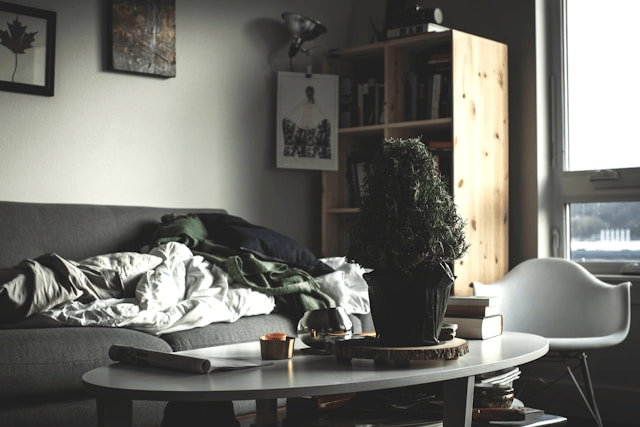Decluttering your home can feel like climbing a mountain with no summit in sight. For many people, even thinking about tackling the mess can trigger anxiety, procrastination, and frustration. But the good news is, you can declutter your home without stress and without feeling overwhelmed. With the right approach, you’ll discover that letting go of unnecessary items doesn’t have to be a daunting task. It can actually be empowering and even enjoyable.
This article will guide you through practical, realistic steps to help you create a more organized and peaceful home environment.
Start with a Clear Vision
Before you touch a single drawer, take a moment to define why you want to declutter your home. Your reason might be simple maybe you want more space, less cleaning, or a more peaceful mind. Or maybe you’re preparing for a life change like moving, welcoming a baby, or downsizing.
Whatever the reason, get clear on your “why.” Visualize your ideal space. Picture a clutter-free living room, a calm bedroom, or a tidy kitchen counter. This vision will serve as your motivation when things get tough. A meaningful goal will help keep you grounded and focused.
Break It Down Into Small, Manageable Tasks
One of the biggest reasons people avoid decluttering their home is the feeling that it has to be done all at once. Spoiler alert: it doesn’t.
Trying to tackle your entire home in one weekend is a recipe for burnout. Instead, break the job into bite-sized tasks. Focus on one drawer, one shelf, or one surface at a time. You don’t need to clean out the entire garage today just start with one box.
This method helps you build momentum, which makes future tasks feel easier and less intimidating. Progress, not perfection, is the goal.
Use a Decluttering Method That Fits Your Style
There’s no one-size-fits-all way to declutter your home. Some people love structure, others prefer flexibility. The key is to choose a method that fits your personality and lifestyle.
Here are a few popular methods:
-
KonMari Method: Keep only what sparks joy.
-
20/20 Rule: If you can replace an item for under $20 and in under 20 minutes, let it go.
-
One-Minute Rule: If a task takes less than a minute (e.g., putting something back), do it immediately.
-
Four-Box Method: Label boxes as Keep, Donate, Trash, Relocate. Every item goes into one.
Experiment until you find the right strategy. The best method is the one you’ll actually stick to.
Set a Timer and Declutter in Short Sessions
You don’t need a full free day to make progress. In fact, trying to declutter for hours at a time can quickly lead to exhaustion and decision fatigue.
Instead, set a timer for 15 or 30 minutes. Pick one small area and get to work. When the timer goes off, you’re done. If you feel good, you can keep going but there’s no pressure. This approach prevents burnout and makes decluttering without stress much more achievable.
Short sessions done consistently are more effective than a single, overwhelming clean-out.
Sort Items Into Clear Categories
When you’re sorting your belongings, decision-making is easier if you use clear categories. Stick with the tried-and-true five:
-
Keep
-
Donate
-
Sell
-
Recycle
-
Trash
If you’re unsure about an item, ask yourself:
-
Do I use this regularly?
-
Does this add value to my life?
-
Would I buy this again today?
If the answer is no, it’s probably time to let it go. Decluttering tips like these help you move past indecision and build clarity around what deserves space in your home.
Handle Emotional Attachments Gently
Letting go of sentimental items is often the hardest part of decluttering your home. Old letters, childhood mementos, and gifts can carry a lot of emotional weight.
Here are a few ways to handle them without guilt:
-
Photograph items you want to remember but don’t need to keep physically.
-
Create a memory box for a limited number of sentimental keepsakes.
-
Share heirlooms with family members who may appreciate them more.
You’re not dishonoring the past by letting go of physical objects. You’re making room for the present.
Maintain Your Decluttered Space
Once you’ve made progress, the next step is maintaining it. Clutter has a sneaky way of returning if you’re not mindful.
Here are simple habits to keep things in order:
-
Adopt a “one in, one out” rule for new purchases.
-
Do a quick tidy-up at the end of each day.
-
Use labeled bins or baskets to keep similar items together.
-
Revisit each room every few months for a mini-declutter session.
Consistent small actions will help you stay ahead of the mess and maintain the calm, clean environment you’ve worked hard to create.
Conclusion: Progress Over Perfection
Overcoming decluttering overwhelm starts with a mindset shift. You don’t need to do it all today. You don’t need a Pinterest-perfect home. You just need to start and keep going, one small step at a time.









